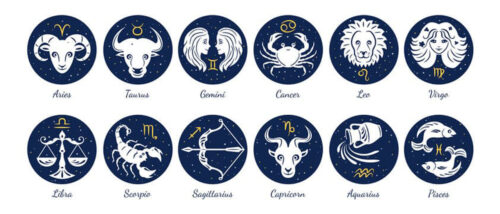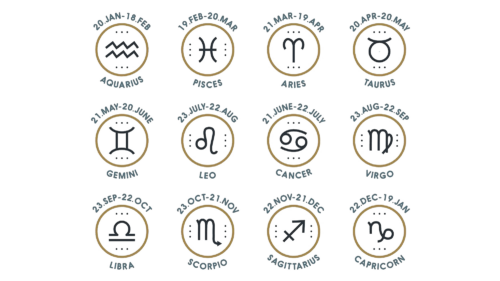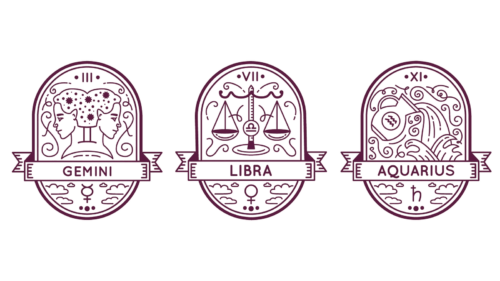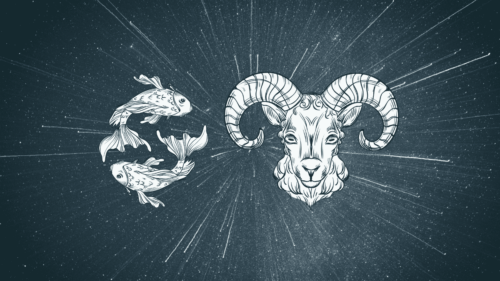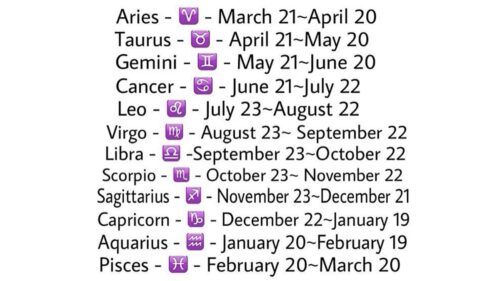Astrology, a field intertwining celestial phenomena with terrestrial life, draws from a rich tapestry of cultural and scientific knowledge. Originating in ancient Egypt, astrology’s foundational principles, as codified by Claudius Ptolemy, traveled through Rome, embedding themselves within Western astrology. At its core, astrology utilizes the zodiac—a celestial belt featuring the ecliptic, or the Sun’s apparent path, as its central axis. This belt, housing the orbits of our solar system’s planets, is meticulously divided into twelve segments of equal longitude, each representing the zodiac signs.
These signs are categorized by elements into fire signs (Aries, Leo, Sagittarius), earth signs (Taurus, Virgo, Capricorn), air signs (Gemini, Libra, Aquarius), and water signs (Cancer, Scorpio, Pisces), each bringing unique personality traits and influencing human affairs in distinct ways. The positions of the Sun, moon, and planets at the time of one’s birth, detailed in natal charts, are believed to shape one’s personality and destiny. This belief extends to the compatibility between signs, which astrologers consider a useful tool for understanding interpersonal relationships.
Astrology also incorporates the Chinese zodiac, a cycle of twelve animals (rat, ox, tiger, rabbit, dragon, snake, horse, goat, monkey, rooster, dog, pig) that adds another layer of complexity to astrological interpretations. The concept of the rising sign, or the zodiac sign that was ascending on the eastern horizon at the time of birth, further refines this cosmic puzzle, offering insights into how individuals project themselves into the world.
The tropical zodiac, employed by Western astrology, aligns with the seasons, marking the vernal equinox as the starting point of Aries. This system contrasts with the sidereal zodiac, which takes into account the precession of the equinoxes, a phenomenon first noted by the Babylonians. This precession—caused by the gradual shift in the Earth’s rotational axis—highlights the dynamic and evolving nature of astrology as a field of study.
Astrology, thus, stands as a multifaceted discipline, a puzzle where elements like the fire signs’ passion or the earth signs’ stability interlock with celestial movements and ancient traditions. It’s a practice that, beyond the mere prediction of events, seeks to offer insights into the intricate web of human personality traits and relationships, guided by the stars and planets that have fascinated humanity since the dawn of civilization.
A bit of History
The vault of the sky has been above people’s heads throughout the history of mankind. Since time immemorial, people have distinguished some signs and phenomena that could be called eternal, so stable and steadily repeated.
Observing the stars provided answers to many practical questions. For example, it made it possible to predict the change of seasons. Thanks to such predictions it was possible to determine, for example, the time of river flooding, the beginning of sowing and reaping, and the beginning of grazing livestock. So, the work of Stargazer was in honor among ancient peoples. And, for example, in Mesopotamia step pyramids-ziggurats were erected for astronomical observations.
Origin The word “Zodiac” in translation from Greek literally means “animal circle”, and “circle of animals”, but the origin of this concept is associated not with Greece, but with a more ancient civilization – Mesopotamia. Here, between the Tigris and Euphrates rivers, the oldest civilization on Earth – Sumerian – emerged. Its representatives laid the foundations of science, and many of their achievements are still used today.
For example, it was the Sumerians who divided an hour into 60 minutes, a circle into 360 degrees, and established a seven-day week – according to the number of planets available for observation before the invention of the telescope (the Sun and Moon were also included in this number). One of the most important activities of the Sumerian sages was the observation of the celestial sphere. Having noticed that the Sun makes a full circle on it every year, they began to use this phenomenon for counting time. The Sumerian counting system was duodecimal, so the belt along which the Sun moves during the year was divided into 12 parts, each of which corresponded to a certain constellation.
It turned out that day by day the zenith point shifts relative to the celestial sphere. After a year, the Sun returns to its former position, describing a full circle in the sky. The constellations through which this circle passes are called the Zodiac. The word comes from the Greek word “zoon” (“living being”, “animal”). From the same word comes the name of the science of zoology. What does this have to do with animals? Yes, because the constellations that the Sun visits during the year are almost all named after animals or living beings. These constellations:
Aries, Taurus, Gemini, Cancer, Leo, Virgo, Libra, Scorpio, Sagittarius, Capricorn, Aquarius, Pisces.
The Sun enters the territory of each constellation on the 22nd day of each month and leaves for the next constellation on the 22nd day of the following month. For example, the Sun is in Aries from March 22 to April 21, in Taurus from April 22 to May 21, and in the constellation of Scorpio from October 22 to November 21.
What purpose pursued Sumerian sages, creating the doctrine of the zodiacal circle? Initially – purely utilitarian: counting time. It was an agricultural calendar, each zodiacal period of the year corresponded to the time of any agricultural work or other circumstances with which the names of constellations were associated: Taurus – the beginning of plowing (plowing on bulls); Libra – the time after the harvest, when the grain is weighed; Aquarius – the rainy season.
Similarly, each sign was conceptualized. But science in Mesopotamia was practiced by priests, and the religion of that time had a strong magical beginning, so astrology was born together with astronomy: they tried to predict the future according to the signs of the Zodiac. This system was adopted by ancient Greece and inherited from it by medieval Europe and the modern world.
Zodiac Signs: Theory
Thousands of people are born on earth who have similar character traits, motives of actions, and stereotypes of behavior. Astrologers explain such similarity by an indisputable fact – the date of birth, the influence of the position of the celestial luminaries on the fate of man.
At the moment of a person’s birth celestial bodies occupy a certain place concerning the Sun. The annual path of the Sun among the stars is conventionally divided into twelve equal parts, which are designated by certain symbols of constellations close to them, called the signs of the Zodiac. Each sign of the Zodiac has its period of validity:
Each Zodiac sign is patronized by one or two planets: Aries – Mars, Taurus – Venus, Gemini – Mercury, Cancer – Moon, Leo – Sun, Virgo – Mercury, Libra – Venus, Scorpio – Mars and Pluto, Sagittarius – Jupiter, Capricorn – Saturn, Aquarius – Uranus and Saturn, Pisces – Jupiter and Neptune.
These planets give people certain character traits:
- Sun (Leo) – active manifestation of self in the world around, strong creativity, source of vitality, dignity, autonomy, authority, pride, independence, wholeness, stability, generosity, artistry, desire to patronize and help others, love of holidays, entertainment, luxury, ability to quickly forget sorrows and stretch joy for a long time;
- Moon (Cancer) – adaptability to the environment, passive maintenance of existence, strong imagination, tenderness, romanticism, poeticism, dreaminess, melancholy, capriciousness, sensitivity, changeability, instability, susceptibility, impressionability, sentimentality, unassertiveness, attachment to the home;
- Mercury (Gemini, Virgo) – analytical thinking, constant movement, curiosity, prudence, receptivity to information, ability to languages, sociability, pliability, impassivity, cunning, dexterity, desire for compromise, developed eloquence;
- Venus (Taurus, Libra) – sensuality, emotionality, harmony and beauty, love of comfort, sense of justice, friendliness, and dislike of conflict, sexuality, seriousness, elegance, charm, attractiveness, plasticity, reliability, strong creativity, empathy, ability to get out of depression quickly;
- Mars (Aries, Scorpio) – desire for leadership, enthusiasm, courage, determination, inability to pretend, aversion to gossip and intrigue, self-confidence, intolerance, carelessness, straightforwardness, persistence, impulsiveness, excitability, temper, submission to passions;
- Jupiter (Sagittarius, Pisces) – confidence, self-love, purposefulness, solidity, imposing, respectability, ability to see the general without dwelling on details, self-esteem taking into account opinions, orientation in space, intolerance of competitors, ability to direct and coordinate the actions of others, to see their place and the place of others in the world, to catch unfavorable moments and choose allies, leadership of the considerations of the case, not personal gain;
- Saturn (Capricorn, Aquarius) – conservatism, adherence to habits, traditions, old friends, logical, concrete thinking based on experience, sense of duty, isolation, detachment, patience, low socialization, determination, sullenness, pedantry, stability of existence, constancy, punctuality, concreteness, mistrust, skepticism, poor adaptability to new things, diligence, distinction between personal and collective, reverence for elders, for authority;
- Uranus (Aquarius) – intuitive thinking, superconsciousness, telepathic and supernormal mental abilities, desire for new, original, freedom-loving, independence, non-recognition of authority, conventions, unyielding will, assertiveness, self-confidence, denial of the past, aspiration into the future, democracy, resistance to material difficulties;
- Neptune (Pisces) – developed subconsciousness, intuition, clairvoyance, musical and poetic abilities, a fine sense of harmony, rhythm, religiosity, the ability to empathize, capriciousness, instability, the desire to compromise, often being in melancholy, craving for utopias, mysticism, romanticism, dreaminess, desire for continuation, lack of integrity;
- Pluto (Scorpio) – activity, assertiveness, inner strength, great persistence, collectivism, durability, concreteness of thinking, desire for transformation and destruction of old forms, aversion to romance and sentimentality, ability to organize mass movements.
Zodiac signs have the nature of the four elements: Fire, Earth, Air, and Water. People born under the signs of one element have similar temperaments and common physiological and mental characteristics:
- Fire (Aries, Leo, Sagittarius) – activity, autonomy, independence, integrity of perception and action, low susceptibility to external impulses;
- Earth (Taurus, Virgo, Capricorn) – concreteness, practicality, slowness in perceiving new things, poor adaptability;
- Air (Gemini, Libra, Aquarius) – mobility, sociability, ability to switch quickly from one subject to another, desire for interaction;
- Water (Cancer, Scorpio, Pisces) – high receptivity, sensitivity, plasticity of the psyche, constancy of habits, immersion in the inner world of experiences.
At all times astrologers have seen the universe in miniature in man. Certain organs and body parts correspond to the signs of the Zodiac in the Cosmos: Aries – head, Taurus – neck, Gemini – arms, Cancer – chest, Leo – back, Virgo – stomach, Libra – lower back, Scorpio – genitals, Sagittarius – buttocks, thighs, Capricorn – knees, Aquarius – calves, Pisces – feet.
Studying the characteristics of people belonging to a certain sign of the Zodiac, it should be remembered that a person born in one of the last three days of the period of this or that sign, borrows the character traits of the next sign of the Zodiac.
Zodiac Signs: Practice
Zodiac signs by month of birthday can tell you a lot about people. All signs have their nature and peculiarities that will tell you how to find your path to success. Astrology will help you to understand the mysteries of zodiac signs.
Astrology is a doctrine that describes the influence of the planets on people’s lives, their present and future. The main tool of astrology is the horoscope. It reflects the characteristics of the location of the planets at a certain point in time concerning the signs of the zodiac. Each planet affects a person differently.
The Sun, Moon, Mercury, Venus, and Mars are the personal planets. They are closest to the Earth and therefore move through the zodiac the fastest. Even if people are born on the same day a few minutes apart, the personal planets can have very different effects on them.
- The Sun is responsible for the “inner self”, our consciousness, will, and expression of self, which determines a person’s abilities and character.
- The Moon influences the subconscious mind and determines our needs, instincts, and wants.
- Mercury symbolizes thinking, intellect, speech, and the ability to learn.
- Venus is feelings, emotions, love and beauty, and the ability to empathize.
- Mars is responsible for ambition. It endows a person with energy, will, courage, and aggression.
- Jupiter and Saturn are social planets that influence a person’s behavior in society, goals, and plans. These planets are further away from Earth, so changes in their positions can be felt for a very long time.
- Jupiter determines our ideas about the rules of behavior – what can and cannot be done. It is used to judge a person’s achievements, wealth, fame, and power.
- Saturn is associated with patience and conservatism, the ability to overcome obstacles and strictly follow the rules.
Uranus, Neptune, and Pluto are the higher planets. They are farther from the Earth than the others, so they change their position slowly. The higher planets determine the characteristic features of entire generations.
- Uranus is associated with evolution, change, and technological advancement. It is responsible for ingenuity, freedom, and the desire to go beyond the usual.
- Neptune gives us a super-sensory perception of the world and determines our intuition, spirituality, and connection to religion. Neptune helps to expand the limits of perception. Also, this planet influences the fate of the whole society.
Dates of Zodiac Signs
- Aries (March 21 – April 19)
- Taurus (April 20 – May 20)
- Gemini (May 21 – June 20)
- Cancer (June 21 – July 22)
- Leo (July 23 – August 22)
- Virgo (August 23 – September 22)
- Libra (September 23 – October 22)
- Scorpio (October 23 – November 21)
- Sagittarius (November 22 – December 21)
- Capricorn (December 22 – January 19)
- Aquarius (January 20 – February 18)
- Pisces (February 19 – March 20)
Traits of Zodiac Signs
The 12 zodiac signs are divided into 4 elements: Fire, Air, Earth, and Water. Each element leaves its imprint on the characteristics of the signs. Signs on the circle are located in such a way that when the signs of one element are united, a triangle-trigon is formed. In addition to the elements, the zodiacal circle is divided into crosses – depending on the dynamics of the psyche of the group they are divided into cardinal (strong-willed, purposeful Aries, Capricorn, Cancer, Libra), fixed (stable, not prone to sudden changes Taurus, Leo, Scorpio, Aquarius) and mutable (fickle, maneuvering in the waters of life Gemini, Virgo, Sagittarius, Pisces).
Each sign of the zodiac is named after the constellation to which the Sun is closest in the current period: Aries, Taurus, Gemini, Cancer, Leo, Virgo, Libra, Scorpio, Sagittarius, Capricorn, Aquarius, Pisces.
There’s a reason for this. Neighboring planets affect the character of the representatives of the sign, and are responsible for ambition, giftedness, and propensity for various activities.
The patron planets of the zodiac signs:
- Aries – ruler Mars gives the sign such traits as sharpness, brightness, vivacity, vigor, and impetuosity.
- Taurus – ruler Venus gives stability, confidence, and material harmony.
- Gemini – ruler Mercury is responsible for curiosity, sociability, and the ability to establish contacts.
- Cancer – ruler Moon brings soulfulness, sensuality, inner peace, and the ability to care for others.
- Leo – ruler Sun brings energy, passion, the ability to be in the center of attention, stability, and creativity.
- Virgo – ruler Neptune gives attentiveness, desire for perfection and order, neatness, and perfectionism.
- Libra – ruler Venus is responsible for smoothness, softness, balance, beauty, and refinement.
- Scorpio – ruler Pluto brings passion, intuition, mystery, ability to see the essence of events.
- Sagittarius – ruler Jupiter gives a person intelligence, breadth of soul, the desire to expand boundaries, and the ability to lead.
- Capricorn – ruler Saturn brings in the character of concreteness and discipline, the ability to see the goal and go to it.
- Aquarius – ruler Uranus is responsible for revolutionary, breakthrough ideas, anticipation of the future, and inner freedom.
- Pisces – ruler Pluto gives creativity, inspiration, the ability to dig deep, and the existence of a philosophy.
In addition to the zodiac sign that determines the Sun at the time of your birth, you also have an Ascendant. This is the sign that was rising on the eastern horizon at a particular time over the place where you were born. While the Sun sign sets your inner worldview, the ascendant determines how others perceive you, how you interact with others, and how you show yourself.
Zodiac Signs Traits: Summary
Each sign has its own set of archetypes, similar to each other. Roughly speaking, astrologers perceive the world as a theater, arranged by the Universe itself, where each person is assigned one or another role, which he plays according to a predetermined script.
Aries
Representatives of this sign are purposeful and usually know what they want. However, due to excessive pressure, they do not always get everything. Aries are passionate, temperamental, honest, and courageous people, thanks to which everything that surrounds them is filled with drive and energy.
Taurus
This sign is both modest and romantic, thanks to Venus, the planet of love. Taurus, as a rule, are reliable, strong, patient, and responsible people. But sometimes they can be stubborn, indifferent, and jealous. Taurus is a loyalist, cultivator, and preserver.
Gemini
A savvy and intelligent sign, for whom it is important to constantly learn something and communicate with someone. They can empathize and sympathize. However, due to excessive energy, they become restless and are unable to make decisions and focus on one thing for a long time. Gemini is the mediator, actor, and trickster.
Cancer
Of the best qualities in Cancer can be identified creativity and sensitivity, of the worst – the habit of manipulating someone and being pessimistic. Although representatives of this water sign are homebodies by nature, they will never refuse an exciting trip. Cancer simultaneously assumes the role of parent, child, and nurturer.
Leo
Leos, ruled by the Sun and Fire, truly behave like kings or queens of the jungle in life. This sign can be a true leader – creative and active, but it is also inherently dramatic, shy, selfish, and arrogant at times. Leo is seen as king and creator. Lions know better than anyone how to “follow your heart” and not be afraid to do so.
Virgo
Virgos are known for their attention to detail, logic, and pragmatism. This sign is deeply loyal, kind, and generous to people. However, there are negative sides to Virgo. Representatives of this sign like to criticize themselves and others, as well as worry about nothing and work more than they should, forgetting about rest and entertainment.
Libra
This sign respects the personal space of another person and knows how to listen. Knows what and when to say, and when it is better to keep silent. Representatives of this sign, as a rule, are very kind, diplomatic, caring, and generous people who try to do only the right thing. But they also tend to hold a grudge and not take responsibility, even if they become a participant in some conflict.
Scorpio
This is a bright and perceptive zodiac sign. However, despite this energy, they often give the impression of withdrawn people. Calm and relaxed – this is the atmosphere that representatives of this sign like to create around them, regardless of how they feel. Scorpio is a transformer, a “gray cardinal.”
Sagittarius
Those born under this zodiac sign do not like to obey, because of this they are often on their wavelength. In astrology, representatives of this sign are considered cheerful and charismatic adventurers with their philosophy, the essence of which is to make this life a little better. Sagittarius is a teacher and philosopher.
Capricorn
Known for their responsibility, discipline, and sense of tact, Capricorns tend to have successful careers. But in family and love, there can be problems with them because of Capricorns’ excessively demanding nature – they put too high expectations on those around them. Representatives of this sign are strong and resilient people who like to achieve goals.
Aquarius
Representatives of this sign are rebels, who as no one knows how to find solutions to old problems and penetrate the essence of what is important, without listening to the opinions of others. However, at times they can seem heartless and adamant. They have a hard time expressing their feelings. Aquarius – innovator and humanist.
Pisces
At first glance, this sign may seem overly romantic and dreamy, but Pisces can also cool down quickly if they are offended or disrespected. Represented by two fish swimming in opposite directions, it seems that this sign always has to choose between one path or the other – sometimes reality and their fantasy world. Pisces are wise, generous, and have well-developed intuition, but because of their excessive gullibility, are often frightened and worried about something.
Zodiac Symbols
Aries ♈️
The prototype of the Aries symbol according to one of the versions was the hero of the ancient Greek myth – the golden ram. The sign simultaneously resembles a modified letter “V”, and the head of a ram, as a symbol of progressive power, courage and initiative, striving for life.
Taurus ♉️
The symbol of the Taurus sign resembles two horns placed on the circle. From the point of view of esotericism we have a combination of images of the circle (the sign of the Earth) and the semicircle (the sign of the Moon), which symbolizes the creation of matter and space.
Gemini ♊️
The sign of Gemini schematically looks like two letters “I” or the Roman double, at a glance revealing the duality of the character of people born under this sign. Division of matter into two parts as the division of the human soul in two – the background of the sign is multifaceted and ambiguous.
Cancer ♋️
The symbol of Cancer is similar to two claws and is also quite complex, it represents duality, but with a feminine character. The combination of femininity, self-sacrifice and perseverance turn the two arcs into two beginnings that give impetus for new life.
Leo ♌️
The symbol of Leo is an elegant and graceful curl with a circle at the end – is a direct reference to the Sun, which is the patron saint of this sign of the Zodiac. It reflects the Spirit and inner core, strength of character and bright creative abilities.
Virgo ♍️
The sign of Virgo is a stylized letter “M”. Sometimes the Virgo symbol acquires the image of three ears of wheat, which speaks about the connection of the sign with the Greek goddess Demeter, the patroness of nature, crops, fertility.
Libra ♎️
Libra is the only constellation personified by an inanimate object. Schematically its symbol exactly corresponds to its name and reflects the ideas of justice and balance. It is a symbol of the bifurcation of the spiritual and bodily, heavenly and earthly, the balance between the outer and inner world.
Scorpio ♏️
The sign of Scorpio is also very similar to the Latin letter “M”, but with a venomous stinger at the end. This speaks eloquently that Scorpio will stop at nothing to achieve its goal. Like Virgo, this zodiac sign exists in close interaction with energy flows, only more takes from the outside than gives to the outside world.
Sagittarius ♐️
A simple memorable symbol of Sagittarius is one of the arrows in Chiron’s quiver. In esoteric sense it is an arrow burning all karmic tails of a person, getting rid of the burden of the past and unnecessary responsibility. The same arrow gives a person a vector for further development.
Capricorn ♑️
Capricorn is one of the most mythical creatures of the zodiacal circle, appears to us in the image of the cheerful god Pan, although most often depicted in the form of his distant prototype – the Babylonian god Ea, who had the body of a goat with a fish tail. The symbol of Capricorn is the personification of wisdom, determination and courage, which help to overcome any obstacle.
Aquarius ♒️
The symbol of Aquarius resembles waves in the ocean, which perfectly characterizes the elemental nature of the representatives of the sign of Aquarius. In esoteric terms, two waves in the sign of Aquarius symbolize living and dead water. The ancient symbol of the sign of Aquarius was more complex – it depicted a man, pouring water from two jugs on the fish. Symbolically it means the birth of the mind.
Pisces ♓️
This sign hides the goddess of love Aphrodite and her son Eros, who were turned into fish by Zeus to save them from the terrible monster Typhon. Two fish seem to swim together, but directed in different directions and it is important. This is the nature of the representatives of this sign. This is a symbolic representation of the eternal confrontation of the spirit and soul of man, earthly and heavenly.
Conclusion
Astrology offers a unique lens through which to view the nuances of human character, abilities, and potential future paths, standing in contrast to psychology’s statistical analysis of personality. Through astrology, one can glean insights into the life events one is likely to attract, based on the celestial blueprint at the time of birth. The ancient adage, “The stars incline but do not oblige,” encapsulates the belief that while the cosmos may influence, they do not dictate our destinies.
The birth chart and horoscope serve as guides to an individual’s developmental program, which, although determinant, is not unyielding. Understanding one’s celestial program is crucial for navigating life in harmony with these cosmic patterns, learning from them, and drawing conclusions. The ancients posited that fate governs only those unaware of their cosmic blueprint.
Astrology empowers individuals to align their personal growth cycles with the broader cosmic cycles, granting insight into one’s life’s program. This knowledge brings clarity and direction, transforming astrology into an essential tool for organizing our lives. For instance, signs like Gemini (the Twins), Virgo (the Virgin), Capricorn (the Sea Goat), and Aries (the Ram, akin to the Sheep in symbolism) not only reflect diverse personality traits but also guide individuals in understanding their unique paths and relationships with the universe. This alignment with cosmic forces provides a structured framework for personal development, highlighting astrology’s role in offering clarity and purpose.


